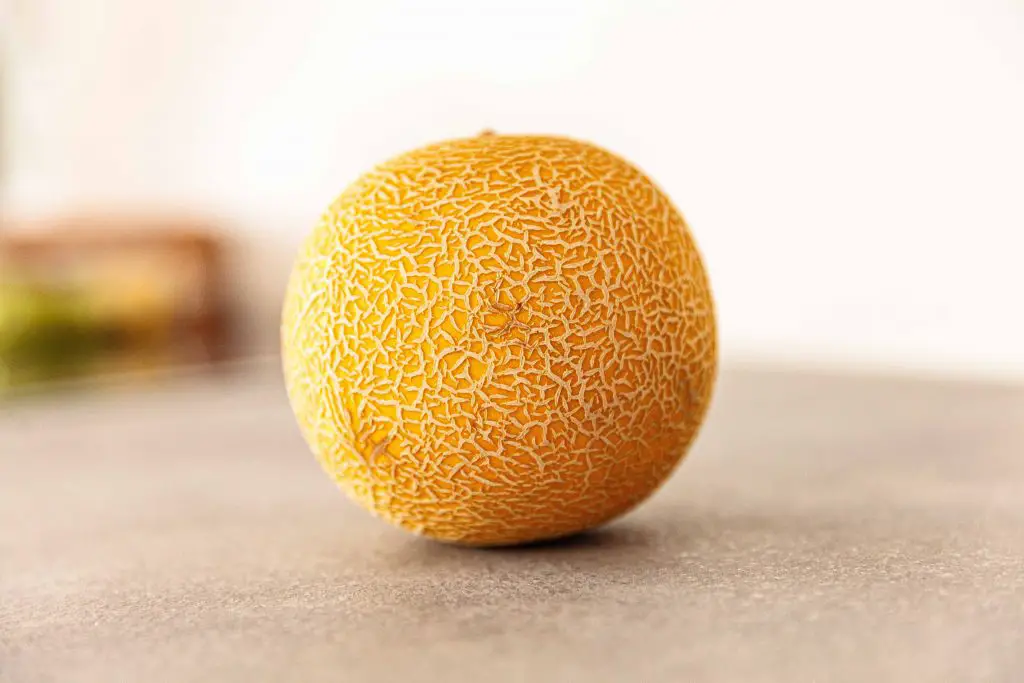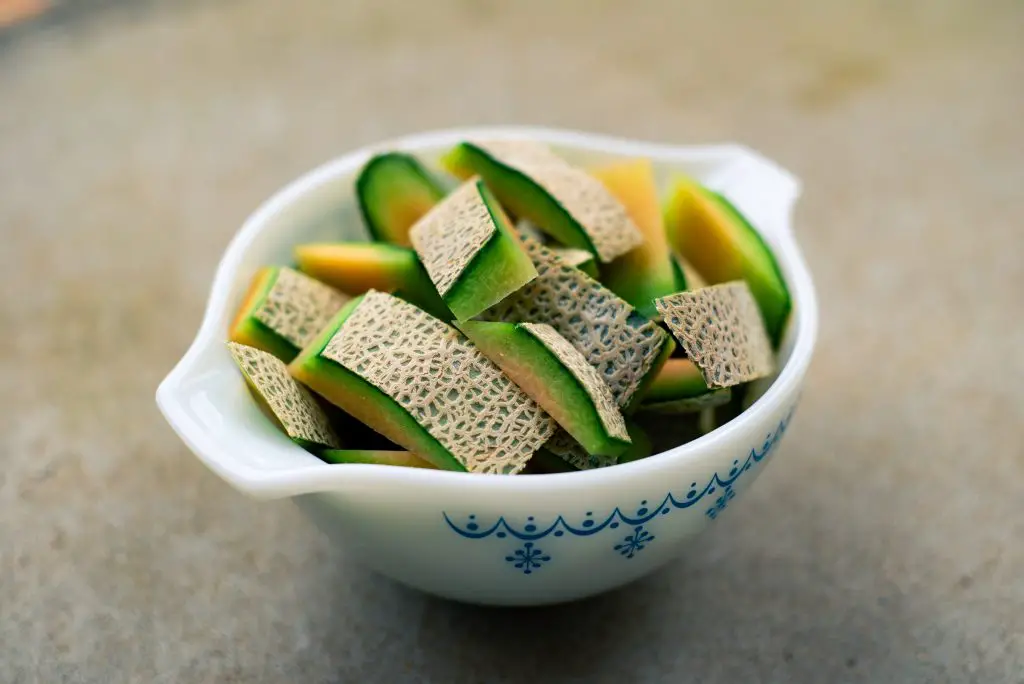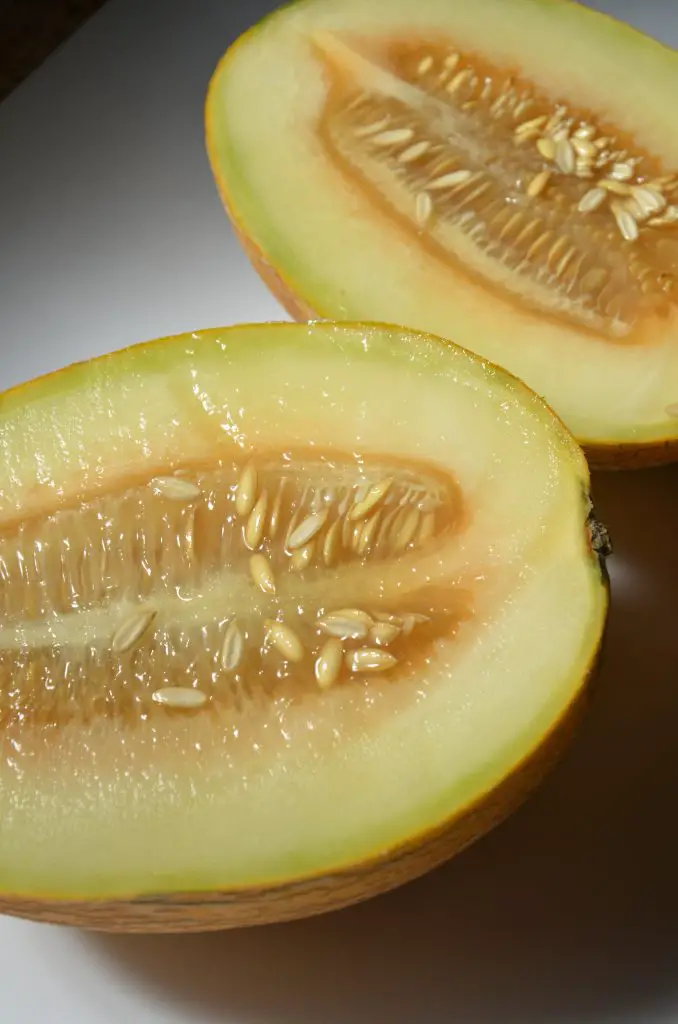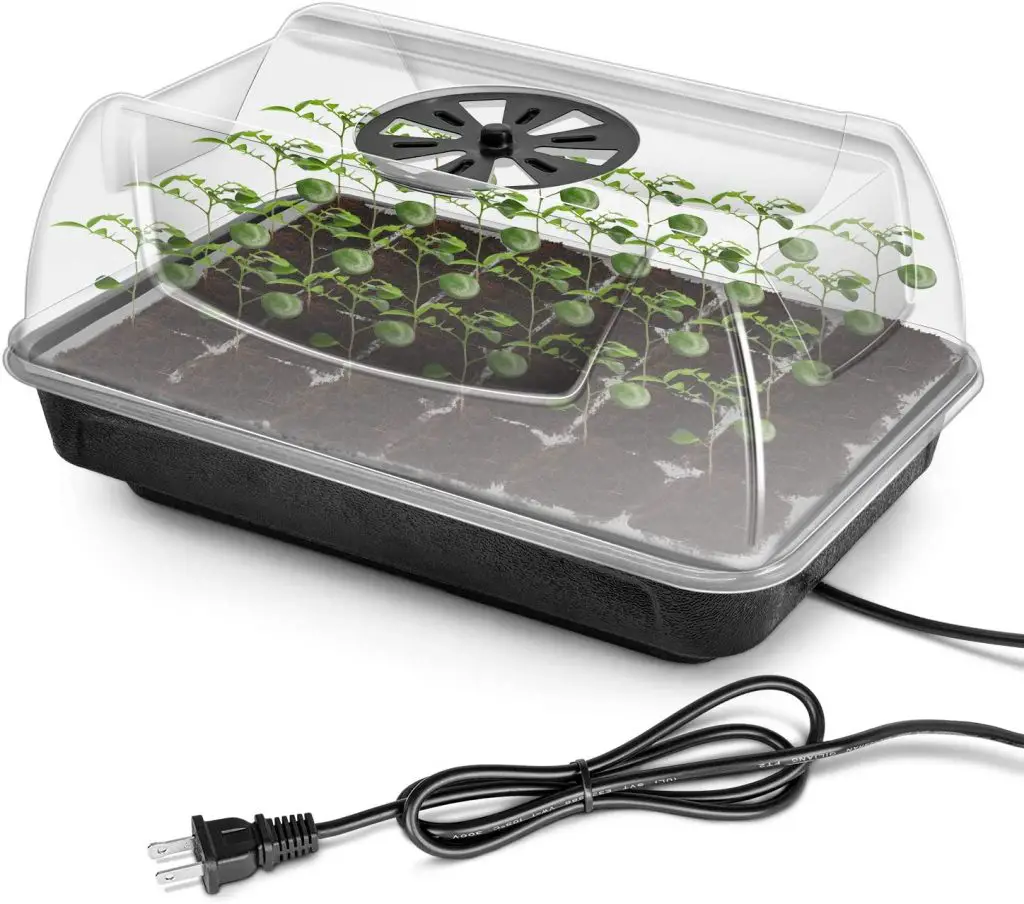Can You Grow Cantaloupe From Store Bought Fruit? If you like cantaloupe and regularly purchase it from the grocery store you might have wondered whether you could take the seed from the center of the melon and plant it out in the garden to grow your own melons?
The seed taken from the cantaloupe from a grocery store will grow if planted into the garden. However, as many commercially produced varieties are grown using hybrid seeds it may produce a melon that is different from the one from which the seeds came from. The degree of this difference will depend upon the combination of parents that have been used to create the hybrid seed.
The reason hybrid seeds do not produce identical plants in subsequent generations is that they are genetically unstable. Hybrid seeds are created by cross-pollinating selected varieties to give specific properties that are desirable. However, as this newly created genetic variation undergoes a subsequent cross-pollination it will result in significant variation in the genetic makeup of a plant.
Typically only 5% of the seeds produced from the fruit of this type will yield melons that are identical to the parent as such it can be somewhat of a lottery as to the quality of the fruit. However, in most cases, hybrids are usually prepared from varieties that do produce relatively nice fruit so more often than not you will probably get a decent result.
However, if you want to grow your own fruit and also collect the seeds for the following year knowing that it will produce a consistent result the best option is to purchase open-pollinated or heirloom seeds. One of the best places to purchase heirloom varieties from is seeds now as they specialised in these types of seeds and also have a wide range of fruit and vegetable seeds available at low cost.
If you purchase from other seed merchants that also supply hybrids the way to identify whether it is open-pollinated or a hybrid seed is to look for the term hybrid or F1 in the title of the varieties’ name. If either one of these terms are there it is a hybrid seed.
How To Grow Cantaloupe From Seed
Cantaloupe is a member of the cucurbit family which also includes things like pumpkins, watermelons, and corn. These plants are frost-sensitive and also require warm conditions to thrive. As such the best time to plant is in spring, however, in many locations it will still be relatively cold so it is highly recommended that you start the plants off in a seed tray indoors.
If you live in a relatively cold location I would highly recommend that you purchase a heated propagation tray as that will allow you to get going with your seeds much earlier in the season. The key advantage of heated propagation trays is that it is much easier to control the temperature consistently which will ensure that your seeds get off to the best possible start.

If you need to purchase a product the one we would recommend is the ipower heated propagation tray. The reason we recommend this particular product is because it has a removable seed tray which is useful as this is the component that will deteriorate first in the unit. So being able to replace that part will extend the life of it substantially.
The second reason is that the unit has a humidity dome which will help to maintain a constant temperature and humidity for the young seedling. Additionally, the product is relatively cheap, to see the latest price on Amazon click here.
If you are taking seed from a fruit the easiest way to extract it is to scoop out the centre of the cantaloupe with a spoon and then place the seeds into a flour sieve. The seeds can then be washed easily to remove the excess pulp leaving just the seeds behind. The seeds then should be dried out on a paper towel before being planted.
Planting Cantaloupe Seeds
To plant cantaloupe seeds start by filling the seed tray with a good quality seed raising mix. Plant the seeds at a depth of approximately 0.5 inches (1 cm). If you are using a modular seed tray we recommend that you plant 2 to 3 seeds per cell as this will ensure that you have a plant in each cell.
The seedlings will typically take 7 to 14 days to appear at which point it is advisable to remove weak seedlings leaving one plant per cell. During this period you will need to keep the soil moist by watering regularly.
The seedlings will typically need to spend at least 6 weeks in the seed tray in order to become established at which point you can consider planting them out into the garden. However, it is important to ensure that the temperatures are sufficiently warm when the plant goes out into the garden.
Ideally a temperature of approximately 15°C to 20°C (59°F to 68°F) is ideal. If it is not yet warm enough the seedlings can be potted on to larger pots while waiting for the weather to warm up.

Planting Seedlings In The Garden
Once the weather has warmed up and the seedlings are large enough they can be planted out into the garden. When planting them out they should be placed in a location that gets at least 6 to 8 hours of sun per day at a spacing of approximately 2 ft (60cm) apart.
In terms of soil conditions, the plants prefer moist soil that is well-drained and contains plenty of nutrients. To ensure that your soil has enough nutrients it is advisable to dig in a bag of compost before you plant the seedlings.
When the seedlings are planted it is also advisable to put some snail bait around the seedlings as they can be highly susceptible to attack. Additionally, it is a good idea to apply a thick layer of mulch to suppress weed growth.
Looking After Cantaloupe Plants
Once the plants have gone into the ground and become established the main maintenance jobs will be ensuring that the plant remains moist and the beds are weed-free.
Additionally, you can grow cantaloupes either as a sprawling vine across the ground which takes up more space but requires less work, or alternatively, you can grow the cantaloupe vine over a trellis which will save space.
However, to do this successfully you will need to firstly erect a trellis. The easiest way to do this is to use reo mesh or temporary fencing which is quick and easy to erect. Then you will also need to regularly check the plant and tie any new tendrils into the structure to ensure that the plant is supported properly.

Harvesting Cantaloupes
Harvesting cantaloupes at the right time can be a little bit challenging for a novice gardener because they do not give clear signals like many other fruits that they are ready to harvest. However, there are a couple of signs that you can look for that will indicate that the fruit is ready to harvest.
The first sign is the smell of the cantaloupe. If it is close to being ripe it will develop the characteristic cantaloupe smell that you typically see in the supermarket. The second indicator is that the bottom of the cantaloupe will begin to soften. You can test this by pushing gently on the end of the fruit and if it has a little bit of give in it it is likely to be ready to harvest.
I hope you found this article useful and have great success with your cantaloupe. If you have any questions or queries please leave them in the section below.
Relevant Articles
Is Rockmelon And Cantaloupe The Same Thing?
How Many Cantaloupes Per Plant?
Can You Save Corn Seeds For Next Year?
Why Do My Cucumbers Bloom But Don’t Produce?


